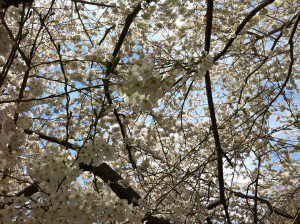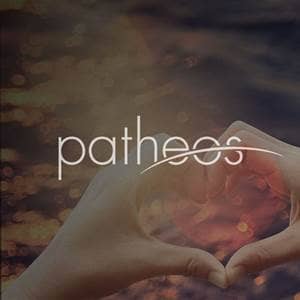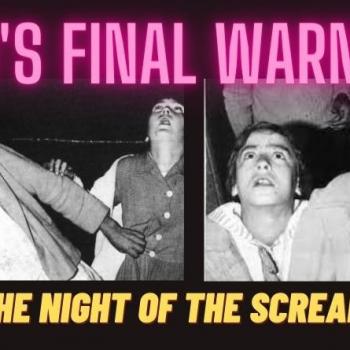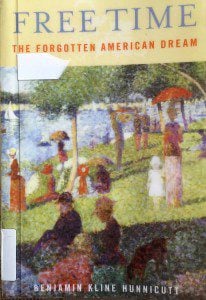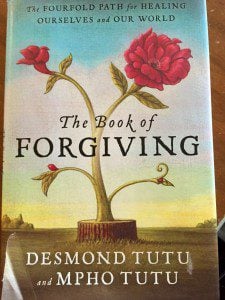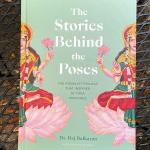As Easter approaches, I invite you to consider that we should worry less about what people say they believe happened one Sunday morning 2,000 years ago and more about we are living as if resurrection still happens. Along these lines, Clarence Jordan, one of my heroes and a twentieth-century Christian saint, said,
The proof that God raised Jesus from the dead is not the empty tomb, but the full hearts of his transformed disciples. The crowning evidence that he lives is not a vacant grave, but a spirit-filled fellowship. Not a rolled-away stone, but a carried-away church.
Clarence Jordan (1912 – 1969) was born in Talbotton, Georgia in 1912, the seventh of ten children. The Jordans were active member of the local Southern Baptist church. At church Clarence was taught a vision of racial equality (“Red and yellow, black and white, all are precious in God’s sight…”), but he was increasingly bothered that these lyrics were in stark contrast to the racial discrimination he regularly witnessed outside church walls, not to mention the racial segregation on Sunday mornings.
After graduating high school, Clarence earned a degree in agriculture from the University of Georgia, then a Ph.D. in the Greek New Testament from Southern Seminary in Louisville, Kentucky. He felt called to take Jesus’ demanding words in the Sermon on the Mount seriously. As his days of formal schooling were ending, plans began to take shape to found a community to be called “Koinonia Farms,” named after the Greek word for “fellowship or communion.” He sought to unite his twin passion for agriculture and scripture with his commitment to radical Christian discipleship. It would hopefully be, in Clarence’s words, a “demonstration plot for the kingdom of God.”
In 1942, Clarence, his wife, and another couple purchased 440 acres of land in Sumter County near Americus, Georgia about three hours south of Atlanta, but trouble came almost immediately. From the beginning they had put racial equality into practice by inviting the workers on the farm to eat together, irrespective of race. This choice quickly spurred the local Ku Klux Klan into action. There were many caustic encounters with local racist residents, and one of his favorite questions for those with loyalties to their southern heritage was, “Your choice seems quite clear. It is whether you will follow your granddaddy or Jesus Christ.”
He commanded respect because he was so willing to put his life on the line for what he believed in, and he was famous for his pithy retorts, which helped diffuse tension even as they prophetically critique the status quo. One famous example is when a pastor showed him an expensive cross the congregation had just purchased for the steeple, Clarence replied, “You got cheated. Times were Christians could get them for free.”
Koinonia Farms, in time, became Koinonia Partners, which eventually birthed Habitat for Humanity International under the leadership of Millard Fuller, who was deeply inspired by Clarence. Clarence died in 1969 not long after the first Koinonia Partners house was built, but the legacy and challenge of his life live on.
I invite you to hear again to his words: “The proof that God raised Jesus from the dead is not the empty tomb, but the full hearts of his transformed disciples. The crowning evidence that he lives is not a vacant grave, but a spirit-filled fellowship. Not a rolled-away stone, but a carried-away church.” Again, what I take away from this quote is that we should worry less what people say they believe happened 2,000 years ago and more whether we are living as if resurrection still happens. The question is, “How are we partnering with God today in transforming despair into hope, apathy into compassion, hate into love, and death into new life?”
The contemporary prophet Wendell Berry similarly challenges us to “Practice resurrection” in his poem “Manifesto: The Mad Farmer Liberation Front.” Here’s a taste of this poetic and prophetic masterpiece:
So, friends, every day do something
that won’t compute. Love the Lord.
Love the world. Work for nothing.
Take all that you have and be poor.
Love someone who does not deserve it.
Denounce the government and embrace
the flag. Hope to live in that free
republic for which it stands.
Give your approval to all you cannot
understand. Praise ignorance, for what man
has not encountered he has not destroyed.Ask the questions that have no answers.
Invest in the millenium. Plant sequoias.
Say that your main crop is the forest
that you did not plant,
that you will not live to harvest.
Say that the leaves are harvested
when they have rotted into the mold.
Call that profit. Prophesy such returns.Put your faith in the two inches of humus
that will build under the trees
every thousand years.
Listen to carrion – put your ear
close, and hear the faint chattering
of the songs that are to come.
Expect the end of the world. Laugh.
Laughter is immeasurable. Be joyful
though you have considered all the facts.
There is so much more to this wonderfully provocative poem, but I continue to be most drawn to the closing line: “Practice resurrection.” What would it mean, not to “belief in the Resurrection,” but to practice resurrection?
Peter Rollins has a powerful monologue that speaks to what it might looks like to practice — or fail to practice — resurrection. Rollins begins with the intentionally shocking assertion that,
Without equivocation or hesitation I fully and completely admit that I deny the resurrection of Christ. This is something that anyone who knows me could tell you, and I am not afraid to say it publicly, no matter what some people may think.
After a dramatic pause, he continues,
I deny the resurrection of Christ every time I do not serve at the feet of the oppressed, each day that I turn my back on the poor; I deny the resurrection of Christ when I close my ears to the cries of the downtrodden and lend my support to an unjust and corrupt system. However there are moments when I affirm that resurrection, few and far between as they are. I affirm it when I stand up for those who are forced to live on their knees, when I speak for those who have had their tongues torn out, when I cry for those who have no more tears left to shed.
Jordan, Berry, and Rollins are all pointing out that it is less important what people say they believe happened on a Sunday morning 2,000 years ago and much more important whether we are partnering with God to practice resurrection today. This Easter, these prophets are challenging us to ask, “How are — and how are we not — following Jesus’ example of caring for the poor and of building the Beloved Community?
As we seek to practice resurrection right now in this world, I can think of no better celebration of a Progressive Christian theology of Easter than Allen Ginsberg’s famous poem, “Footnote to Howl,” which invites us to a celebratory, life-affirming, visceral embrace of holiness in all things:
Holy! Holy! Holy! Holy! Holy! Holy! Holy! Holy! Holy! Holy! Holy! Holy! Holy! Holy! Holy!
The world is holy! The soul is holy! The skin is holy! The nose is holy! The tongue and hand holy!
Everything is holy! everybody’s holy! everywhere is holy! everyday is in eternity! Everyman’s an angel!
The bum’s as holy as the seraphim! the madman is holy as you my soul are holy!
The typewriter is holy the poem is holy the voice is holy the hearers are holy the ecstasy is holy! . . .
holy the unknown and suffering beggars holy the hideous human angels! . . .
Holy the sea holy the desert holy the railroad holy the locomotive holy the visions holy the hallucinations holy the miracles holy the eyeball holy the abyss!
Holy forgiveness! mercy! charity! faith! Holy! Ours! bodies! suffering! magnanimity!
Holy the supernatural extra brilliant intelligent kindness of the soul!
This Easter, may you open your whole self — heart, soul, mind, and strength — to God’s inspiring call to new life and renewed love. May you feel God luring you, prompting you, and encouraging you — each day and in each new present moment — to practice resurrection.
For Further Reading
- Clarence Jordan: Essential Writings (Modern Spiritual Masters Series), edited by Joyce Hollyday.
Notes
1 Koinonia Farms — see P. Joel Snider, The “Cotton Patch” Gospel: The Proclamation of Clarence Jordan (University Press of America: New York), 13.
2 “demonstration plot for the kingdom of God.” — G. McLeod Bryan, Voices in the Wilderness, Twentieth-Century Prophets Speak to the New Millennium, (Mercer University Press: Macon, GA: 1999), 59.
3 “follow your granddaddy or Jesus Christ.” — Clarence Jordan, The Substance of Faith and Other Cotton Patch Sermons, ed. Dallas Lee (Association Press: New York: 1972), 7.
4 “Times were Christians could get them for free” — G. McCleod Bryan, “Theology in Overalls: The Imprint of Clarence Jordan,” Sojourners 8 (Dec 1979), 9.
5 “birthed Habitat for Humanity” — Millard Fuller and Diane Scott, Love in the Mortar Joints: The Story of Habitat for Humanity (Association Press: Chicago, 1980), 67.
6 Peter Rollins — You can read Pete’s words at http://peterrollins.net/?p=136 or see his proclaim them onstage at http://vimeo.com/19258866.
7 To learn more about Ginsberg, I highly recommend the recent film Howl.


